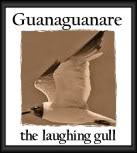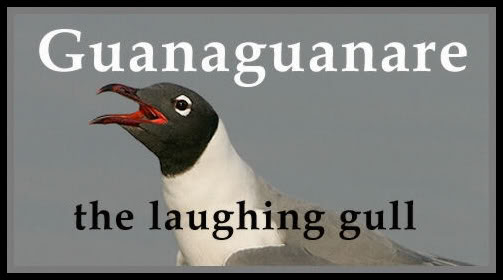Excerpts: 1 | 2 | 3 | 4 | 5 | 6 | 7 | 8
TITLE
A Sketch of Trinidad: The Canadian Mission and the opening of Presbyterian College in San Fernando, Trinidad by Alice Clark. Ottawa: Hope and Company, Stationers and Printers, 1892.
Previous
Page 41
TUNAPUNA.
Bidding good-bye to Port of Spain, we were soon on our way to Tunapuna. Travelling by railroad, we catch a glimpse of St. Joseph, the ancient capital of the island, and pass in sight of Tucutche, the highest mountain in Trinidad, over 3,000 feet in height. On time we arrived at Tunapuna, beautiful for situation, some twelve miles from the city. It is situated at the base of the Northern range of mountains, with picturesque views on every side. The horse and phaeton were on hand to convey us to the manse. Dr. and Mrs. Morton, and Miss Morton, were waiting our arrival, and a right hearty welcome we received. Mr. William Morton accompanied us in the train from Port of Spain, where he is attending college, having already succeeded in gaining scholarships. We were charmed with the hibiscus hedge, in full bloom, that surrounded the large grounds and garden, and shaded by large trees. What is that high tree close to the house, covered with bunches of green berries? They are gooseberries, but not like those in Canada; and these with (dark smooth pointed loaves, thickly covered with white flowers? They are coffee trees. I may add that the coffee of this island is superior to many samples sent to the London market. The large bed of roses with many varieties, were faithfully tended by Miss Morton, and came to great perfection; not the moss-rose, which is always a failure. We noticed with interest Mrs. Morton’s school of Hindi girls, some thirteen or fourteen in number. The house is so constructed that the lower part supplies class rooms and dormitories for the pupils. The girls have been taught to do all their own cooking in native Indian style, taking it by
Page 42
turns. The dishes are mostly rice and tarkara, a savoury mixture of vegetables with salt fish, cocoanut oil, and hot with spices. Each girl is learning to make her own clothing under the direction of Mrs. Morton and others. Religious instruction has occupied an important place in the’ school. The Hindi Bible-class, held five days in the week, has been a great source of interest to the girls, and satisfaction to Mrs. Morton. They translate the Hindi into English. During the Friday evening prayer. meeting, nearly an hour is spent in answering Dr. Morton’s questions, and receiving instruction on the lessons for the week. We were surprised and pleased with their proficiency. Mr. Clark was asked to give an account of his trip to the Pacific Coast, over the Rockies. He did so, and Dr. Morton told the Students to ask any questions on the subject. The first question: “Was it not, a very expensive trip?” and being answered, he replied, “It was very good of Mr. Clark to take that long journey, and spend all that money, and then come down all the way to Trinidad to give them the knowledge about that new country, and the vast mountains”. We happened to be in Tunapuna on Communion Sabbath, and enjoyed the service very much, though it was all in Hindi, except the table service, Mr. Clark conducted in English, but it was quickly interpreted by Dr. Morton. We were pleased to ‘see a number of Europeans at the service, though, like ourselves, they had not much knowledge of the language. The weird singing of the Hindus has a very solemn effect. Four or five of the Hindi girls (Marion among the number, named after a little girl many of us know in Truro), under the guidance of Miss Morton, were morning busily engaged, preparing chocolate from
Page 43
the cacao beans. It was a novel sight to watch the process, from the outset to the end. Some of it was kindly handed to us, before leaving the hospitable home of Dr. Morton; and let me say, it is proclaimed to be, “absolutely pure, and a delightful beverage for breakfast or supper.”
TACARIGUA, AROUCA, ARIMA.
During our stay we visited a number of the Mission Schools in that district, special mention should be made of Tacarigua school, under the care of Miss Blackaddar and her assistants—Miss B. is one of our earliest teachers and has done faithful and efficient work—We had a pleasant time in her cosy home, looking at her curios and rare china gifts, she had received from her Asiatic pupils. Another day she took us out in her dog-cart, drawn by a pretty little pony, and felt proud to tell us that the dog-cart was made by one of her Hindi boys. We were much astonished at the density of the Asiatic population from Tunapuna up to Arouca and indeed all the way to Arima. Here you see on the road, men and women, young and old, going to the market, with their fowls and vegetables, in loaded baskets or trays on their heads, returning in the evening with the home supplies. And many men leading don key with the panniers loaded with charcoal, and other commodities for sale. Donkeys and mules are very useful animals in that country, although it must be said of some, they go fast or slow, or not at all just as the fit takes him. We drive into
Page 44
the coolie village lined with plantain trees, flamboyants, and unfamiliar shrubs with large bright leaves. The dwelling houses are made of mud or bamboo, and thatched with palm leaves, half hidden by banana trees. Most of the men look tall, they are slender and small boned, but the limbs are well formed. Nearly all wear the same dress of India; the thickly folded turban usually white, white drawers or ‘kapra’ reaching but half way down the thigh, leaving the knees and the legs bare, and sometimes a white jacket. They are grave, talk in low tones, and seldom smile. Those you see with heavy black beards are probably Mussulmans, I am told they have their mosques and that ‘the muezzin’s call to prayer, is chanted three times daily on many plantations. The Mohamedans allow the beard to grow. Very comely some of the Hindi women are in their clinging soft, bright flowered dresses and veils, a costume leaving arms and ankles bare. Bright little bronzy innocents, are playing about in natural garb, one little garment would be a sign of religion or civilization and would not add much to the heat of the day. A coolie mother passes, carrying at her hip a very pretty naked baby, its tiny ankles and wrists are circled by thin silver rings, it looks like a little bronze statuette. The mother’s arms are covered from elbow to wrist with silver bracelets some flat and decorated. She has large flowers of gold in her ears, a large gold ring in her nose. This nose ornament does not seem absurd. Those who are well versed in the Hindi Bible, tell us that Rebekah wore a ring “in the breathing place”. This jewellery is pure metal; it is thus the Hindus carry their savings,
Page 45
melted down silver or gold coins, and recasting it into bracelets earrings and other ornaments. The Prebyterian church at Arima is partly owned by the congregation of the Rev. J. Dickson and partly by our Mission, the W. F. M. Society gave a handsome donation, the church meets the requirements of both admirably. A present of a fine large harmonium, had just been received from friends in Britain. The Rev. Mr. Diçkon has for many years ministered to the congregations of Arouca and Arima. Long will we remember our lunch at Arima consisting of luscious oranges, biscuits and milk from the green cocoanut. But the country: who can describe the charming, everlasting hills, here, ever before us? Those nearest are softly shaped and exquisitely green; above them loftier undulations take hazier verdancy and darker shadows. Those who desire to paint a West Indian landscape must take his view from some great height through which the colors come to the eye softened and subdued by distance, toned with blues or purples by the astonishing atmosphere. Now we are approaching the clear sparkling waters of the Arima river, the rocky descent to the river is covered with large ferns, moses and lichens. Leaving our carriage we advance slowly, we are down in the shady valley wandering from spot to spot and lost in wonder, at the variety of gorgeous shrubs and dainty ferns. As we follow this shady path on the bank of the stream are patches of snow white lilies, falling in clusters from stems that rise about a, foot from tufts of glossy green leaves. From the roots of some a delicious sago is prepared. We stood a while to watch the negro washer women busy at their washing in the shallow places of the
Page 46
river. It has a curious interest, this spectacle of primitive toil: the whiteness of the linen laid out to bleach upon the huge bowlders, or patches of grass in the sun. But we must leave this romantic spot, and take the road through Dabadie to the extensive nursery of Palms and principal plants of the tropical world, we were delighted and instructed by the person in charge, taking us through the grounds and explaining the names and qualities of the any plants, which in season would be forwarded to New York and Europe. Sundown approaches: we take the road homeward. The color of the heights is exquisite! being a rich golden,
and when reflected on the bright yellow blossoms of the poui trees, on the sides of the mountains gives an imposing picture for the brush of an artist, or the color photography, recently discovered by Prof. Lippmann.
Previous<--->Next: COUVA
Excerpts: 1 | 2 | 3 | 4 | 5 | 6 | 7 | 8
A Sketch Of Trinidad - Excerpt 6
Subscribe to:
Post Comments (Atom)












0 comments:
Post a Comment